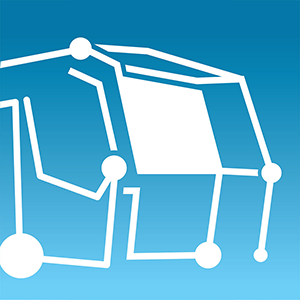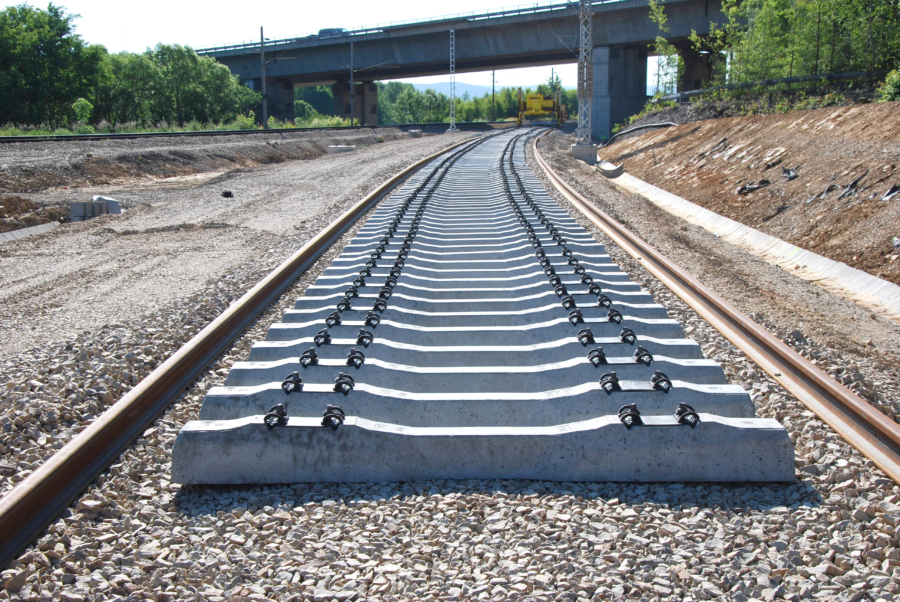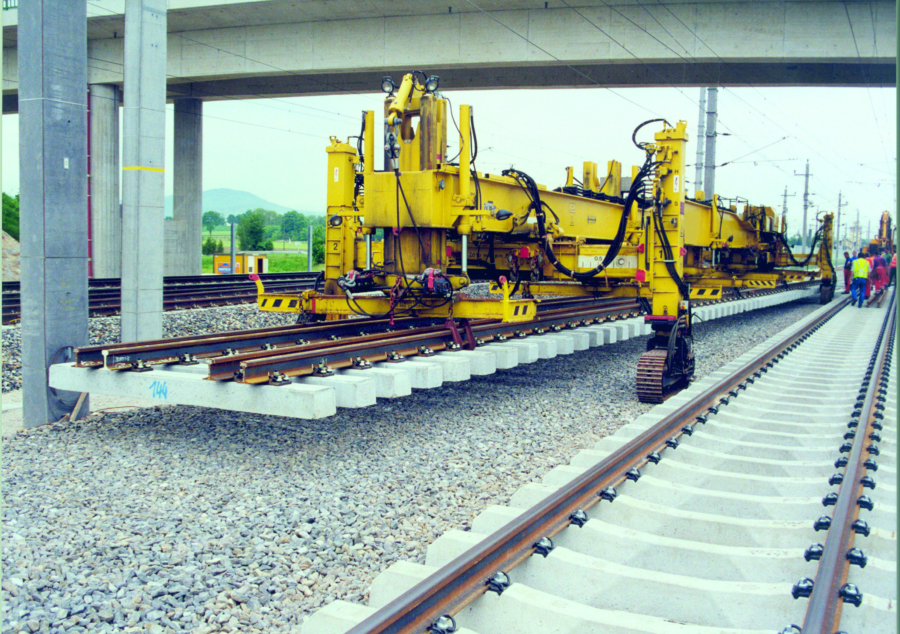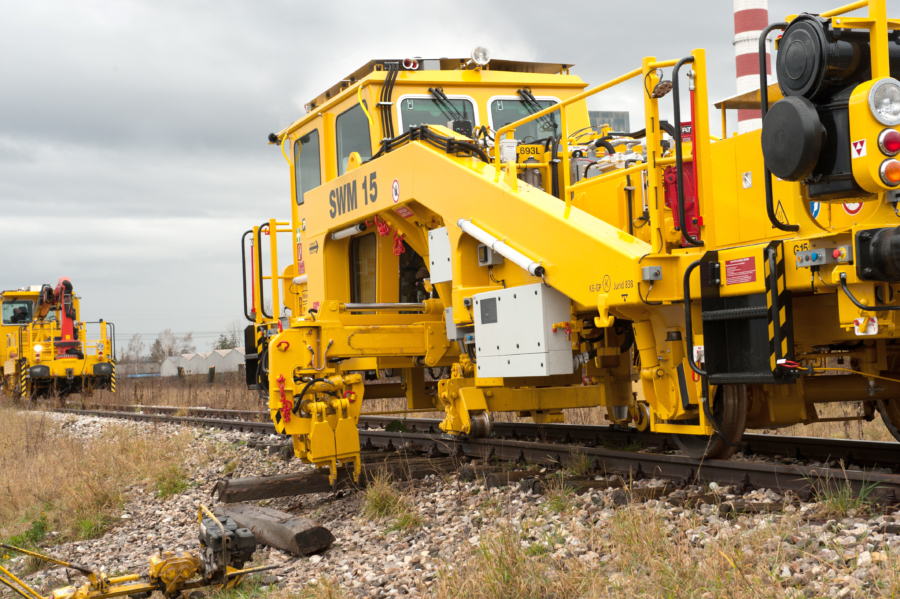
The following are used:
Ancillary work, such as material logistics relating to the actual construction and maintenance task, must also be carried out with full capacity and quality. A reliable, high-quality, and economically successful result is only possible with this comprehensive view of the entire construction process.
The state of the art in modern track laying and track renewal is the track-bound assembly-line method:
The adjacent track can remain open for traffic, which is impossible when employing conventional methods involving excavators and cranes – not to mention the longer track possessions required owing to lower outputs.
The sensitive formation, the base of the track bed, is not travelled on with heavy machinery with intermittent loading when using track-bound methods. Possible reactions to critical subsoil conditions can be avoided. In addition, when compared to the impact trackless processes have, there is no need for roads and paths for transporting building materials.
It goes without saying that every track which is renewed conventionally or with large machines is fully operational and safe. However, continuous track renewal – i.e. with large-scale machine technology – achieves better quality, as a homogeneous section is created and the renewal is carried out reliably according to the same controlled, reproducible pattern. [...] The use of large machines enables shorter construction times and thus benefits all railway customers in both freight and passenger transport.
from „Kapazitätsschonender Gleisumbau“
Hüper, Tesch, Uhlenhut; GRT Global Rail Academy and Media GmbH, 2022
Alternative methods for special applications:

The ROLAY gantry crane from ROBEL (PA 1-20 ES), equipped with a single-sleeper laying device, is a combination of cyclic and assembly-line methods. It picks up 20 sleepers, travels on the pre-positioned new rails, and places the sleepers continuously on the ballast formation. The main advantages of this method are that sleeper spacing can be variably adjusted using electronic odometry, the sleepers can be laid with millimetre precision, they can be placed radially in curves, set-up times are short, and few staff are required.

The WTW turnout transport wagon carefully transports pre-assembled track panels or turnout components to the worksite. Using the turnout renewal machines (WM series, RPK), the turnout components are installed without auxiliary rails or additional lifting equipment. Using our gantry cranes, intolerable deformations and twists do not even occur.
The RPK 40 gantry system with crawler running gear consists of a gantry crane and a self-propelled transport trolley. The machine is suitable for laying turnouts and pre-assembled track panel sections. Using the turnout renewal device means that there is no impermissible twisting or deformation of the turnout parts during transport or installation. The RPK 40 enables short construction times and therefore minimal disruption to operations.

The SWM 15 sleeper exchanging machine replaces individual sleepers in an uncomplicated way. It is equipped with a rotating and swivelling sleeper clamp that grips the old sleeper, pulls it out, and deposits it to the side. The pre-positioned new sleeper is placed under the rails in the opposite direction, with the flexible adjustment options of the sleeper replacement device making work much easier.